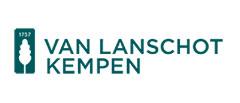
Bij grondstoffen als beleggingscategorie zullen niet alle beleggers gelijk de voordelen zien. Het Kempen dividend team legt in hun meest recente Letter uit waarom zij zich hebben verdiept in deze bedrijfstak.
The Kempen Dividend Letter
Each quarter we publish an entry on a specific theme relevant to our investment process. When it comes to commodities, ‘go low and go slow’ to derive advantage from the protection of the moat – a structural competitive advantage.
The impenetrable moat of cyclical commodity businesses
Commodity producers (such as mining companies) are difficult to love. Profitability varies wildly, driven by even marginal changes in the underlying price of the product. The lack of predictability makes it unattractive to most value investors, who seek to buy a long term earnings stream at a discount. Growth investors are equally cautious, as the high capital intensity of the industry makes growth expensive. Finally, quality investors distrust the management of commodity operators, who see them as reckless capital allocators. We however challenge these investors to broaden their horizons and have a look at a certain subset of companies within this sector: the lowest cost operators. We believe that despite the cyclicality inherent in the industry, this subset can offer both above-average returns and a lower risk of permanent loss of capital.
RESILIENCE BEHIND THE MOAT
A structural competitive advantage is often defined as a moat. A business with a moat protects companies from its competitors. A moat can come from a variety of factors including a strong brand name, economies of scale or customer switching costs. Structural competitive advantages are difficult to maintain and erode over time. Commodity operators may not benefit from high entry barriers, but their main potential advantage, a low cost production base, is highly durable.
A low cost position is often derived from an advantageous geological position that is very difficult or impossible to replicate. For example, the proximity of US chemical producers to cheap shale gas gives them an advantage versus Asian and European producers. Russian fertilizer producers have access to deposits which due to their age have a much higher concentration of ore available than in more recent deposits. Higher concentrations of ore make it cheaper to mine and creates a sustainable cost advantage. This is also the case for Australian iron ore, where large quantities located near the surface make it easier to mine than in almost any other region globally. A low cost position does not stop the industry from being cyclical, but it does give these firms staying power in times of a cyclical downturn.
LOW COST = LESS PAIN
Commodity business experiences the ultimate boom and bust capital cycles. While these cycles can seem inexplicable, they are anything but. Periods of high prices attract entry from marginal producers with structurally higher costs. This cost structure is driven by difficult-to-mine ore or expensive raw materials. Jubilant market conditions make future returns seem attractive to even high cost entrants who then decide to enter. Although construction takes time, once the new supply enters the market, prices decline, as demand often has not caught up to the growth in supply.
Sharp decreases in commodity prices reduce industry-wide profitability, but the pain is not distributed equally. The highest cost operators become cash negative, while low cost operators often maintain healthy margins. For example from 2014 to 2015 the price of iron ore dropped from 130 USD to below 40 USD per tonne, while Rio Tinto was able to maintain operating margins of 25% in its iron ore division in 2015. This allowed Rio to continue to pay down debt and pay out dividends, in spite of a large percentage of the industry making losses. This occurred while at the same time many new entrants, as well as high cost competitors, were forced to shut down their mines, as cash burn could not be sustained indefinitely.
Reductions in production do not happen overnight, and fears of structural low prices drive down share prices for the whole industry. This happens even to the lowest cost operators, which creates the opportunity to purchase them at low multiples of depressed earnings, never mind their normalised earnings power.
EMBRACE THE DECLINE
When commodity prices are low, investors fear further declines and shy away from buying low cost operators. We believe further declines should not be feared, they should be embraced. Accelerated price declines speed up the restructuring process and often cause a faster and more rigorous exit from high cost competitors. Low cost operators are able to withstand these downturns better than anyone else, as they tend to have the best balance sheets in the sector. Their higher returns reduce the need for external financing in any part of the cycle. This reduces the risk of a permanent loss of capital. A depressed environment has the added benefit of making management more cautious of large scale investments as well as acquisitions. This improved, although temporary, capital discipline reduces the risk of poor capital allocation decisions.
Only a subset of commodity businesses have a moat, but when they do they are difficult to beat. Low cost commodity businesses benefit from advantageous geology that can’t be replicated elsewhere, is not subject to changes in consumer taste and won’t easily be disrupted by technology. If one is able to withstand short term stock volatility and is able to buy at a discount to normalised earnings power we believe these businesses offer long term returns that are superior to the overall market.
https://www.kempen.com/en/news-and-knowledge/dividend-letter-2017-october




